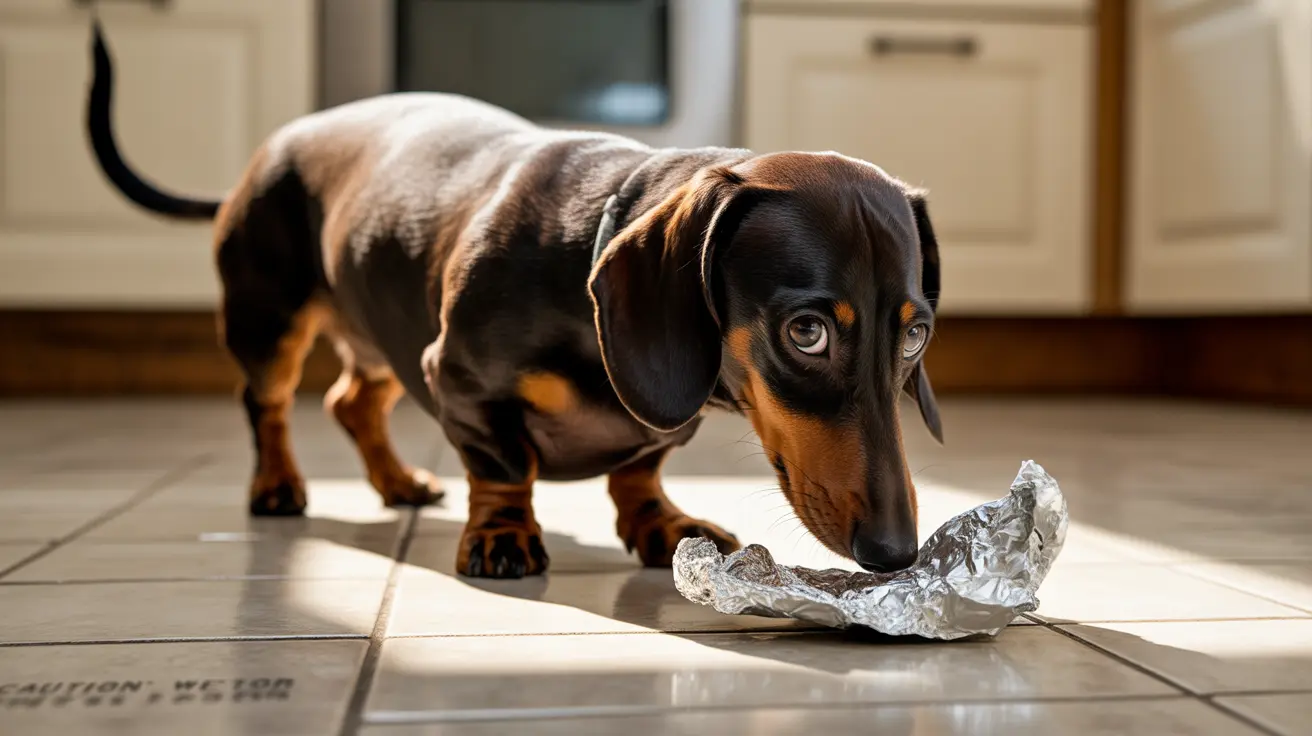Immediate Steps to Take After Your Dog Eats Foil
If you've just caught your dog eating aluminum foil or discovered evidence of foil consumption, take these immediate steps:
Assess the Situation
- Check how much foil was consumed
- Determine if any food was wrapped in the foil
- Note when the incident occurred
- Observe your dog's current behavior
Document Important Details
Keep track of any food residue on the foil, the approximate amount eaten, and the time of ingestion. This information will be valuable if veterinary care becomes necessary.
When to Call the Veterinarian
Emergency Situations Requiring Immediate Care
Seek immediate veterinary attention if:
- Your dog ate a large quantity of foil
- The foil was wrapped around toxic foods
- Your dog is showing signs of distress
- The foil contained bones or sharp objects
Non-Emergency Monitoring Situations
If your dog ate a small amount of clean foil and appears normal, monitoring at home may be appropriate. However, always contact your vet for guidance on your specific situation.
Potential Complications and Risks
Physical Risks
The primary concerns when a dog eats aluminum foil include:
- Gastrointestinal obstruction
- Internal scratching or tears
- Choking hazards
- Blockages requiring surgery
Secondary Risks
Additional complications can arise from:
- Foods wrapped in the foil (especially toxic items)
- Bacterial contamination from food residue
- Pancreatitis from fatty food remnants
Treatment Options and Recovery
Veterinary Interventions
Treatment approaches may include:
- X-rays to locate the foil
- Induced vomiting (if appropriate)
- Endoscopic removal
- Surgery in severe cases
Home Care During Recovery
Follow these guidelines during the recovery period:
- Maintain a bland diet
- Monitor bowel movements
- Watch for signs of complications
- Keep your dog calm and quiet
Prevention Tips for the Future
To prevent future incidents:
- Secure trash containers with tight-fitting lids
- Clean up food preparation areas immediately
- Store foil in closed cabinets
- Consider using dog-proof trash cans
- Train the "leave it" command
Frequently Asked Questions
What should I do immediately if my dog ate aluminum foil?
Assess how much foil was eaten and what was wrapped in it. If it's a small amount of clean foil, monitor your dog closely. For large amounts, foil with toxic foods, or if your dog shows distress, contact your veterinarian immediately.
How can I tell if my dog is sick after swallowing foil, and what symptoms need urgent vet attention?
Watch for vomiting, lethargy, loss of appetite, abdominal pain, difficulty defecating, or bloody stools. These symptoms require immediate veterinary attention, as they could indicate an obstruction or internal damage.
Can eating aluminum foil cause choking or an intestinal blockage in dogs?
Yes, aluminum foil can cause both choking and intestinal blockages, especially if eaten in large amounts or if it's balled up. Small dogs and puppies are at higher risk for these complications.
Is aluminum foil itself toxic to dogs, or is the real risk from foods wrapped in the foil?
Aluminum foil itself isn't toxic to dogs. The main risks come from potential mechanical damage (tears, blockages) and any toxic foods that were wrapped in the foil, such as chocolate, onions, or garlic.
What treatments do vets use if a dog swallows aluminum foil, and when is surgery necessary?
Treatments range from monitoring to surgical intervention. Vets may take X-rays, induce vomiting if appropriate, or perform endoscopy. Surgery becomes necessary if there's an obstruction, perforation, or if the foil can't be removed through other methods.






